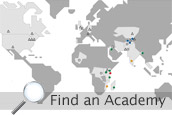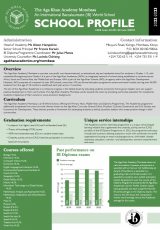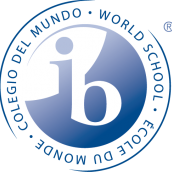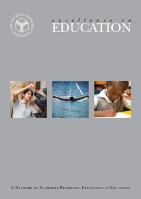TOK IB DP1 Assembly
The Thursday morning senior school assemblies at The Academy are very different to those that take place at many schools. There is a strong emphasis on student participation and wherever possible the themes mesh with the strands that have been identified as part of the Academies’ curriculum.
This week’s assembly was organized by the IB DP1 students. The theme was the Theory of Knowledge (T.O.K), which is regarded as the “glue” that binds the IB curriculum together. In this area, students are encouraged to question their knowledge and how they acquire it. The T.O.K focuses on oneself as a knower and the way in which sensory perception, emotions, language and reason help and hinder our acquisition of knowledge. The course is considered to be fundamental to the IB curriculum as it also addresses how these ways of knowing are used in the Areas of Knowledge such as mathematics, the natural sciences, history, the arts and ethics.
If there is one central questions that the course asks, it is “ How do you know?” This was central to the activities that were used by the IB DP1 students to illustrate the idea of the course to younger students in this assembly. The students were divided into their houses to reinforce their identity with these groups. The IB students then illustrated TOK concepts in very imaginative and informative ways.
One group of younger students was blindfolded. One of these students was placed in front of a scientific model of the human body and asked if they recognized the unknown object. The student was able to do so very easily. Other students were given, in turn, models of individual parts of the human body, such as a heart, an eye etc. These students found it extreme difficulty identifying these objects. The IB students explained the purpose of this exercise in terms of their TOK course. The individual parts of the body represented individual aspects of knowledge. It is very difficult to gain comprehensive knowledge from this small amount portion. The whole body represented knowledge that had utilized other ways of knowing and other areas of knowledge. By embracing these areas you had a clearer picture of the knowledge that you had gained. Another group used exercises that illustrated how our emotions can influence what we read from a text. The aim of this was to show negative emotions can portray a negative image, whilst positive emotions can send a more upbeat view.
The students were asked at the end of the assembly if they had received more answers to their questions or if the discussion had generated more questions. The closing line that "Questions are answers in TOK" summed up the topic extremely well. Thanks to the IB DP1 students for an informative and interesting insight into this part of the IB curriculum.





